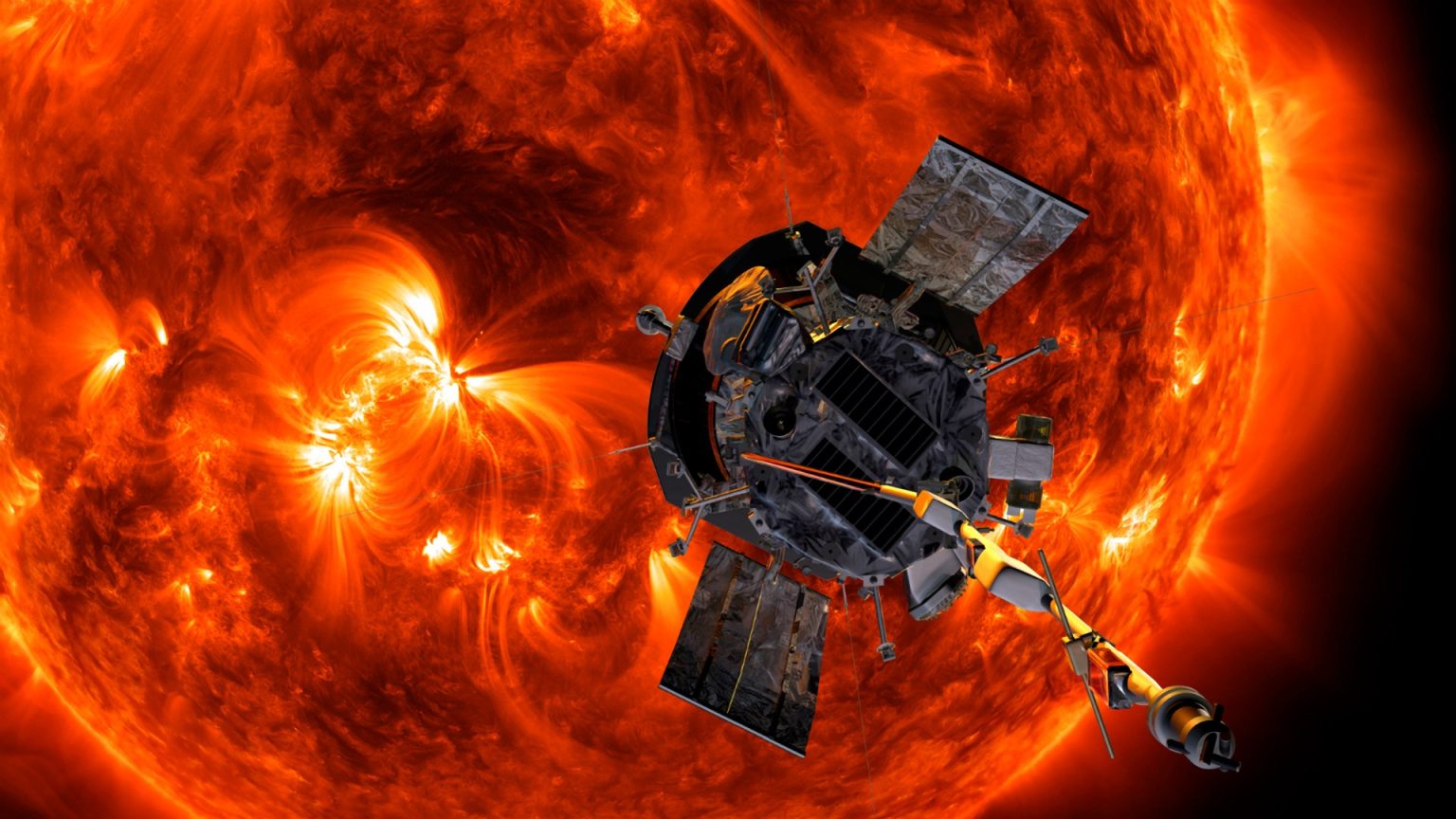The Parker Solar Probe has achieved a monumental feat in space exploration, successfully completing the closest-ever flyby of the Sun by a human-made object. On December 24th, the probe ventured to within a mere 3.8 million miles of the Sun’s surface, a remarkable achievement considering the Sun’s immense heat and radiation. This distance, while seemingly vast, is significantly closer than any previous spacecraft has dared to venture, marking a seven-fold improvement over the previous record. The probe utilizes a clever orbital alignment with Venus, leveraging the planet’s gravity to propel itself closer to the Sun with each pass. This gravity-assist maneuver is crucial for the mission’s success, allowing the probe to gradually spiral inwards towards the Sun over the course of its seven-year mission. The successful completion of this perilous close approach confirms the robustness of the probe’s design and its ability to withstand the extreme conditions near our star.
Withstanding scorching temperatures of up to 1,800 degrees Fahrenheit and hurtling through space at speeds reaching 430,000 miles per hour, the Parker Solar Probe endured a truly extreme environment during its close approach. The probe’s survival is a testament to the ingenuity of its Thermal Protection System, an eight-foot-wide heat shield weighing approximately 160 pounds. This crucial piece of engineering protects the probe’s sensitive instruments from the Sun’s intense heat, allowing it to gather valuable data from within the Sun’s corona, the outermost layer of its atmosphere. The extreme velocities experienced by the probe are a consequence of the Sun’s powerful gravitational pull, which accelerates the spacecraft to incredible speeds as it approaches. This rapid transit through the corona minimizes the probe’s exposure to the intense heat, contributing to the mission’s overall success.
The primary objective of the Parker Solar Probe mission, launched in 2018, is to unravel the mysteries surrounding our nearest star, particularly the enigmatic properties of its corona. Scientists have long been puzzled by the fact that the corona, the Sun’s outer atmosphere, is significantly hotter than its surface, reaching temperatures millions of degrees higher. The probe is equipped with a suite of instruments designed to measure the Sun’s magnetic fields, plasma, and energetic particles, providing unprecedented insights into the dynamics of the corona. Data gathered by the probe is expected to shed light on the mechanisms responsible for heating the corona and accelerating the solar wind, a continuous stream of charged particles emanating from the Sun. Understanding these processes is crucial for predicting space weather events that can impact Earth’s technology and power grids.
Communication with the Parker Solar Probe was temporarily interrupted during its close approach, a consequence of the intense solar radiation interfering with radio signals. The operations team at the Johns Hopkins University Applied Physics Laboratory anxiously awaited confirmation of the probe’s survival, finally receiving the reassuring “beacon tone” signal shortly before midnight on Thursday. This signal, a simple but vital indicator of the probe’s health, confirmed that it had successfully navigated the perilous close encounter and was functioning as expected. The beacon tone paved the way for the downlinking of scientific data, which commenced on January 1st, offering a treasure trove of information about the Sun’s dynamic environment.
The data collected by the Parker Solar Probe during this historic flyby, and subsequent passes planned throughout its seven-year mission, promises to revolutionize our understanding of the Sun. The probe is designed to address fundamental questions about solar activity, including the origin and acceleration of the solar wind, and the processes that heat the corona to such extreme temperatures. Analyzing the data transmitted by the probe will provide scientists with unprecedented insights into the Sun’s magnetic fields, plasma dynamics, and energetic particle populations, ultimately leading to a more comprehensive understanding of our star and its influence on the solar system. This knowledge will not only advance our scientific understanding but also improve our ability to predict and mitigate the effects of space weather on Earth.
The Sun, a nearly perfect sphere of hot plasma, is the central engine of our solar system, providing the energy that sustains life on Earth. With a diameter 109 times that of Earth and a mass 330,000 times greater, it dominates the solar system gravitationally. Composed primarily of hydrogen and helium, the Sun’s surface temperature reaches a scorching 5,505 degrees Celsius. Currently in its middle age, having formed approximately 4.6 billion years ago, the Sun is expected to remain stable for another five billion years before evolving into a red giant and eventually a white dwarf. The Parker Solar Probe mission represents a significant step forward in our quest to understand this celestial giant, its intricate workings, and its impact on our planet.


